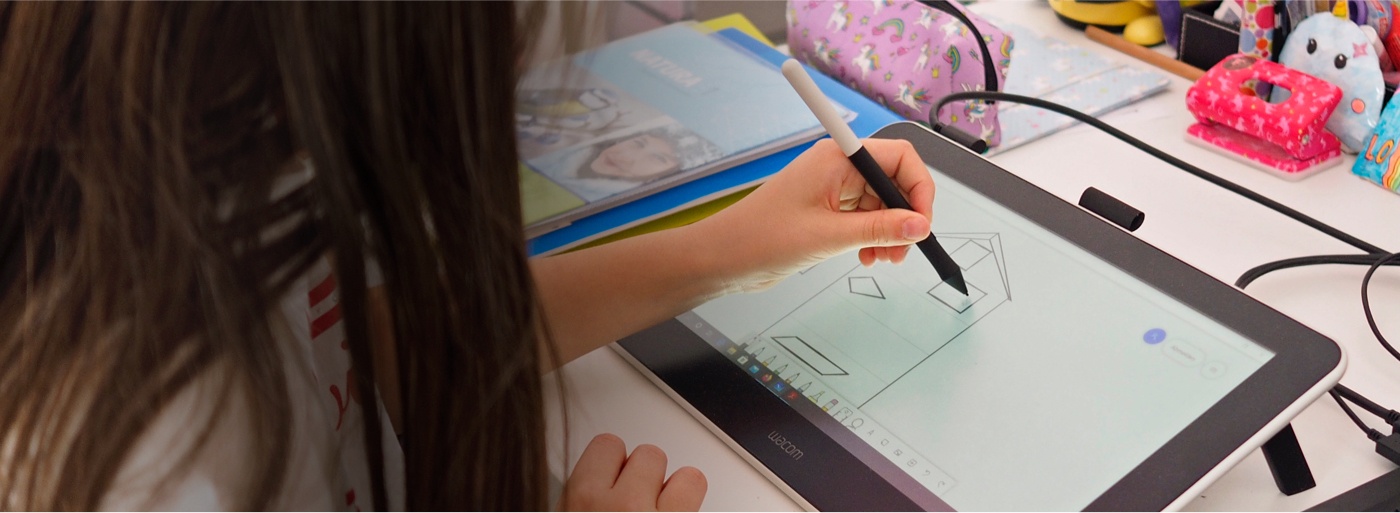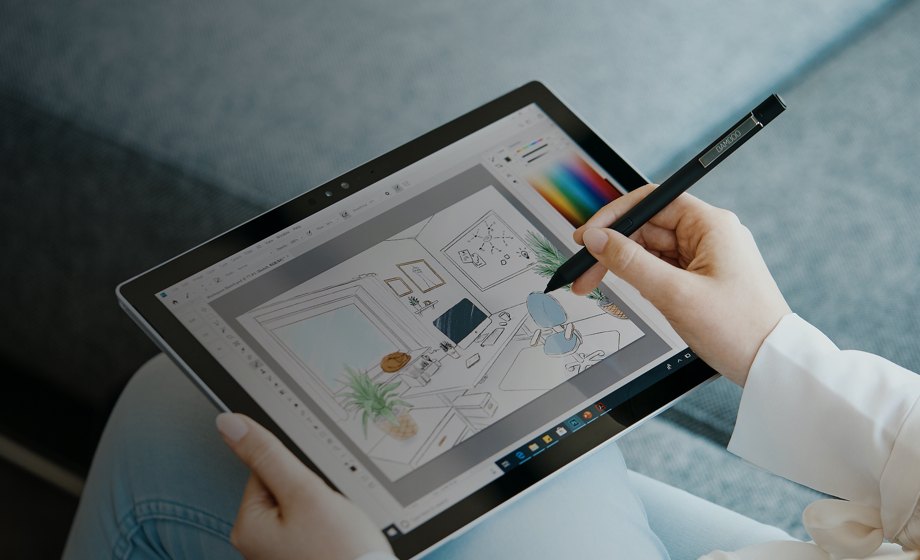Tavolette con penna
Puoi creare bozzetti, disegnare e modificare immagini con un pad reattivo e una penna precisa mentre vedi le tue creazioni prendere vita sullo schermo.


Gli strumenti di videoconferenza e collaborazione in aula sono fondamentali per aiutare gli insegnanti a condividere materiali e sviluppare competenze. La mancanza di lezioni in presenza non deve rappresentare un ostacolo allo studio. Ma fare tutto questo in modo efficiente è una vera sfida. Qui sono descritti i modi migliori per farlo, assicurando allo stesso tempo il coinvolgimento e la produttività degli studenti.

È importante che durante una videochiamata gli studenti abbiano obiettivi chiari, proprio come avviene in aula. Li si possono condividere prima tramite e-mail o delineare nei primi minuti della chiamata. Questo aiuterà gli studenti a impegnarsi e a prepararsi adeguatamente per la lezione.
Un metodo infallibile per creare maggiore interesse consiste nell'assegnare delle attività tramite e-mail o chat di gruppo prima di una lezione virtuale, in modo da fornire agli insegnanti degli argomenti di cui parlare e agli studenti un'idea di cosa aspettarsi dalla lezione. Si può trattare di un progetto di ricerca a cui collaborano tutti i membri della classe o di un tradizionale compito a casa.

Quando le lezioni sono rivolte a classi numerose mediante una chat collettiva, non significa che non vi sia spazio per il lavoro in piccoli gruppi o a coppie. Prima di iniziare una chiamata, stabilisci quali studenti possono collaborare. Durante la lezione riserva del tempo per terminare la chiamata generale e dare agli studenti l'incarico di risolvere un problema in coppia o in piccoli gruppi chiamandosi a vicenda. In seguito, verrà riservato uno spazio a ogni gruppo o coppia che presenterà il proprio lavoro ai compagni, come farebbero in un'aula.

Anche se le gite vere e proprie sono vietate, ci sono tante opportunità per attingere a risorse virtuali e tenere lezioni su luoghi meravigliosi di tutto il mondo. Si può spaziare dai tour nei principali musei ai giochi che simulano la guida di un mezzo attraverso i parchi safari o un trekking nelle riserve naturali. Le risorse online sono molto ampie e spesso gratuite, quindi è bene dedicare un po' di tempo alla ricerca dei migliori video tour da riprodurre in aula e da integrare nei programmi di studio virtuale.

Con la diffusione dei documenti condivisi su cui tutti possono lavorare contemporaneamente, per gli studenti diventa semplicissimo collaborare alla creazione di un report o di una mappa mentale. È sufficiente invitarli tramite e-mail a modificare un documento, con il vantaggio di poter vedere nella cronologia chi ha contribuito a cosa. Inoltre, i documenti condivisi consentono anche di inserire commenti, un ulteriore vantaggio per gli insegnanti che devono scrivere annotazioni e voti con una tavoletta. Usando un display interattivo o una tavoletta con penna Wacom per insegnare, si possono inserire note scritte a mano: è stato dimostrato che questo metodo favorisce l’apprendimento e la memorizzazione.
Fare venire esperti del campo a tenere una conferenza o un discorso può essere una vera e propria sfida logistica. Ma con l'apprendimento virtuale, le barriere sono molto più basse. Ora che le persone lavorano da casa e non serve più viaggiare per raggiungere un luogo, chiedere a uno speaker di partecipare a una lezione in videoconferenza e condividere le sue conoscenze è diventato più facile che mai. È un modo semplice e intelligente di sollevare il morale della classe e proporre prospettive diverse su vari argomenti.

Le lavagne virtuali sono immediatamente accessibili online e possono essere collegate facilmente ai software di videoconferenza. Sono utili soprattutto per le lezioni di matematica e scienze, quando occorre presentare problemi e soluzioni in forma visiva alla classe. Il loro utilizzo aiuta gli studenti a capire meglio: si possono perfino fare screenshot della lavagna e salvarli per riguardarli in seguito. Le lezioni e le annotazioni scritte a mano sono più personali. Vi sono ricerche che hanno dimostrato come aumentino l'interazione in misura maggiore rispetto ai documenti e agli opuscoli digitali.
Le tecnologie professionali per le videoconferenze consentono di registrare le lezioni. Questa è una funzione utile per gli studenti che non riescono a partecipare alle sessioni virtuali o per quelli che vogliono ripassare gli argomenti di cui si è parlato in una particolare lezione. Consente inoltre di condividere le sessioni più facilmente tramite i social media e di ridefinire le procedure per migliorare le lezioni future.

Che si tratti di insegnare o di studiare, Wacom One rende tutto più semplice. Ti permette di spiegare concetti visivamente, incoraggiare la collaborazione ed esprimere la tua creatività. Sono inclusi software creativi e la possibilità di collegamento ad alcuni dispositivi Android. E usare la penna sullo schermo da 13,3" dona la stessa sensazione di usarla sulla carta. Entra nel nuovo mondo dello studio e della collaborazione.
Prodotti consigliati

Wacom One 13
Disegna, progetta e crea direttamente su uno schermo ad alta risoluzione con una penna precisa.

Puoi creare bozzetti, disegnare e modificare immagini con un pad reattivo e una penna precisa mentre vedi le tue creazioni prendere vita sullo schermo.

Disegna, progetta e crea con una penna precisa direttamente su uno schermo ad alta risoluzione.

Scrivi con la penna sulla carta e converti in digitale i tuoi appunti manuali.

Scrivi e metti nero su bianco le tue idee sul tuo dispositivo mobile con una penna digitale Wacom.
Wacom’s vision is to bring people and technology closer together through natural interface technologies. This has made it the world’s leading manufacturer of interactive pen tablets and displays as well as of digital styli and solutions for saving and processing digital signatures. The advanced technology of Wacom’s intuitive input devices has been used to create some of the most exciting digital art, films, special effects, fashion and designs around the world and provides business and home users with their leading interface technology to express their personality. Founded in 1983, Wacom is a global company based in Japan (Tokyo Stock Exchange 6727) with subsidiaries and affiliate offices around the world to support marketing and distribution in over 150 countries.